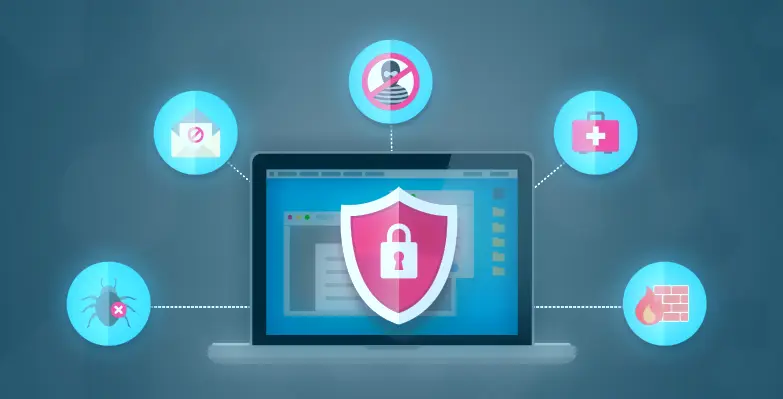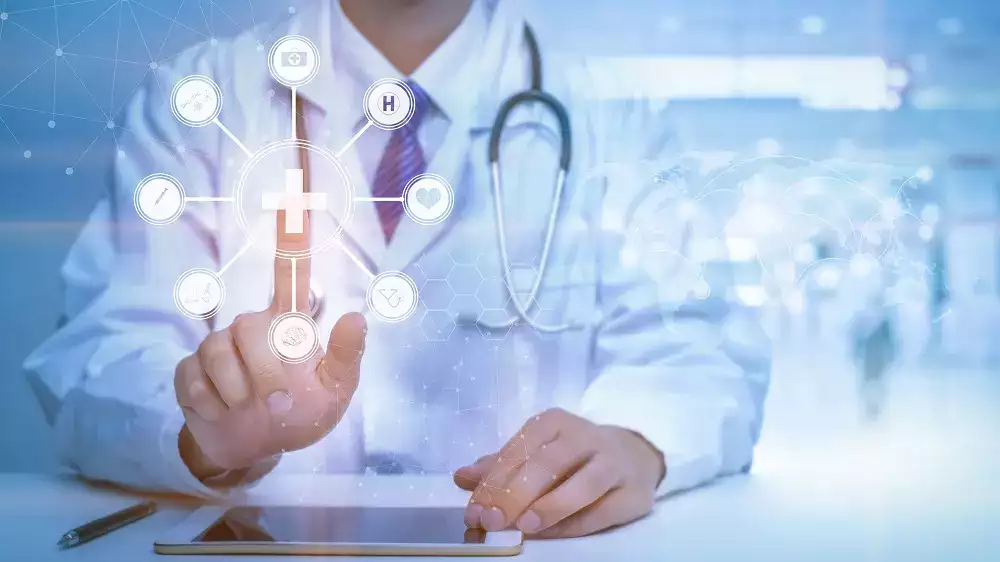In today’s digital age, the healthcare industry is increasingly relying on technology to manage patient information, medical records, and other sensitive data. While the digitization of healthcare has made accessing and sharing information easier, it has also opened up new vulnerabilities and security threats. So we can safely talk about the importance of cybersecurity in the healthcare industry.
Healthcare providers, including hospitals, clinics, and healthcare professionals, collect and store a vast amount of sensitive patient information. This information includes personal identification, medical histories, and insurance data. In the wrong hands, this data can be used for fraudulent purposes, such as identity theft, insurance fraud, or medical fraud. Medical cyber security threats are real, and healthcare providers are increasingly at risk of cyber-attacks. In fact, healthcare is one of the most targeted industries for cyber-attacks.
It’s easier to avoid a problem than to solve it. Сybersecurity audit services – vitamin complex against cyber attacks!
– Starhouse Tech Team
What is healthcare cybersecurity?
Healthcare cybersecurity refers to the protection of sensitive patient information and healthcare systems from cyber threats. The healthcare industry is a prime target for cybercriminals due to the vast amounts of personal and financial data it holds. The sensitive nature of this data makes it crucial to implement robust cybersecurity measures to protect against data breaches, ransomware attacks, and other cyber threats.
Cyber security in healthcare industry is a complex topic that encompasses various elements, including electronic prescriptions, charting, billing, administration, third-party partnerships, and more. These operations can be based on-site or in the cloud, and healthcare systems must have robust defenses against potential cybersecurity threats.
One of the most common causes of data breaches in the healthcare industry is human error, which includes misdelivery due to a lack of training, a weak password, or poor network security. However, the threat of cyber-attacks goes beyond human error. Malicious insiders or external attackers with advanced knowledge of the facility’s IT workings can exploit vulnerabilities to steal patient information or disrupt healthcare operations.
Natural disasters, such as floods or earthquakes, can also create cybersecurity issues, disrupting IT systems and potentially compromising sensitive patient information. Small healthcare practices are especially vulnerable to cyber threats due to their limited resources, making it essential to prioritize cybersecurity measures and invest in robust IT systems.
Healthcare IT cybersecurity is a critical aspect of modern healthcare delivery. With the increasing reliance on digital tools and the growing demand for convenience from patients, the risks of cyber threats continue to grow. Healthcare providers must implement robust cybersecurity measures to protect patient data and ensure compliance with regulations such as HIPAA, HITECH, and NIST. By prioritizing cybersecurity, healthcare providers can help keep patient information safe and maintain the trust of their patients.
What makes healthcare vulnerable?
Cybersecurity risks in healthcare are very high because of the sensitive nature of the information they handle.. Patient data, including protected health information (PHI) and personal identification information (PII), such as social security numbers and credit card information, can be sold for high prices on the dark web. This makes healthcare organizations a lucrative target for cyber criminals looking to make a profit.
The potential cost of data breaches to patients is only one part of the equation. Healthcare organizations also face significant financial and reputational damage. The cost of remedying data breaches is almost three times higher in the healthcare industry than in other industries. Healthcare providers cannot afford to be without access to critical care and medical records, and in cases of a ransomware attack, they may be forced to pay whatever is asked or take other drastic measures.
Ransomware attacks have become increasingly common, with nearly half of all US hospitals reporting that they had been forced to disconnect their networks due to ransomware attacks since March 2021. The effects of a successful cyber attack can extend beyond the immediate financial and operational impact. Proprietary medical research and intellectual property information can be compromised, leading to long-term competitive disadvantages and putting the future of entire organizations in jeopardy.
Overall, healthcare organizations must take cybersecurity seriously to protect the sensitive information they handle and maintain the trust of their patients. By implementing robust cybersecurity measures and investing in IT resources, healthcare providers can minimize the risk of cyber attacks and safeguard patient data.
The benefits of cybersecurity in healthcare
Having strong cybersecurity measures in place has numerous benefits for healthcare organizations. One of the most significant advantages is maintaining a trustworthy reputation. If a healthcare organization falls prey to a data breach, it can cause extensive reputational damage, leading to a loss of trust from patients. Patients want to be confident that their personal and sensitive information is safe and secure with their healthcare providers. By implementing robust cybersecurity measures, healthcare providers can demonstrate their commitment to data privacy and security, thus retaining and attracting patients.
Moreover, cybersecurity measures help healthcare organizations avoid financial issues and other penalties. The costs associated with a data breach can be enormous, including fines, settlements, lost revenue, and mediation requirements. In severe cases, the organization may face criminal penalties. By implementing the necessary cybersecurity precautions, healthcare providers can comply with HIPAA regulations and demonstrate to authorities that they are taking appropriate steps to protect patient data.
Another advantage of having strong cybersecurity protection is that it allows healthcare organizations to improve technological adoption and efficiency. The healthcare industry is constantly evolving, and new technologies are introduced every year. Robust cybersecurity measures provide a safer environment for healthcare organizations to adopt new equipment and software, allowing them to benefit from the latest advances in technology. For example, remote monitoring devices can improve data collection, and modern payment platforms can increase flexibility, all while maintaining strong cybersecurity protections.
The importance of cybersecurity in the healthcare industry cannot be overstated.
The most common healthcare cyber threats

As technology continues to evolve in healthcare, the threat of cyber attacks becomes increasingly complex and sophisticated. Attackers may have different motivations, but the most common objective is to gain access to sensitive information, which can be sold for a high profit or used for personal gain. The tactics of these attacks can vary greatly and may include deleting or corrupting data, as well as industrial espionage.
Within the realm of healthcare cyber security, there are certain threats that pose a significant risk to both the financial bottom line and the reputation of the organization. It is important to identify them in time and take the necessary precautions to protect against them.
Here is an example of the most common healthcare cybersecurity threats:
Ransomware
Ransomware is a type of malware that is becoming increasingly prevalent in the healthcare industry. Once a device or machine is infected, the ransomware will typically encrypt files and other data, locking out authorized users and demanding payment for the decryption key. Healthcare providers are particularly vulnerable to these types of attacks due to their heavy reliance on technology and the critical nature of their operations.
One reason why health records are such a popular target for cybercriminals is because they are considered a low-risk, high-reward target. Each record can fetch a high value on the black market, making them a prime target for hackers seeking to make a quick profit. However, even if the ransom is paid, there is no guarantee that the stolen information will be returned. As such, it is crucial for healthcare providers to implement strong cybersecurity measures to protect sensitive patient data from ransomware attacks and other cyber threats.
Phishing
Phishing attacks are a common and effective way for cybercriminals to gain access to sensitive information. By exploiting the weakest link in the cybersecurity chain, people, attackers can trick unwitting users into clicking on malicious links or opening attachments that can infect their devices with malware. These attacks are often disguised as legitimate emails from reputable sources and can be difficult to detect. Once a user falls for a phishing attack, their device can be compromised, giving attackers access to sensitive information or even control over the device itself. It’s important for individuals and organizations to educate themselves on how to spot and avoid phishing attacks to protect against cyber threats.
Whaling
Whaling is a type of phishing attack that specifically targets high-level executives or decision-makers within an organization. In these attacks, hackers may spend weeks or months researching their targets and gathering personal information in order to craft a convincing message. These messages may request sensitive information, such as login credentials or financial data, or may even ask for physical items to be sent to a specific address. Because the attacker has done their homework, these attacks can be very convincing and difficult to detect. As a result, it’s important for organizations to educate their employees about these types of attacks and to implement security protocols to prevent them from being successful.
Cloud Storage Threats
Healthcare providers have been increasingly adopting cloud-based storage solutions for the benefits they offer in terms of convenience and “always on” connectivity. However, not all cloud-based solutions comply with healthcare cybersecurity standards and HIPPA regulations, which makes them vulnerable to cyber attacks. Potential threats include data breaches, data leaks, loss of sensitive data, misconfiguration of cloud storage, and improper access management. To make matters worse, some organizations don’t encrypt data or implement restrictions before transmitting it. To prevent data breaches, it’s essential to use a private cloud or an on-premise data center and regularly secure and encrypt data.
Data exposure
The loss or exposure of sensitive data can occur in various ways, and it’s not always due to a malicious external attack. Even a lost laptop or accidental disclosure from an employee can result in a data breach. In fact, unintentional data exposure is a major concern for many organizations, as it can lead to serious consequences such as financial loss, legal liabilities, and reputational damage. It’s important for organizations to have robust security protocols in place to prevent these types of incidents and to train employees on proper data handling and disposal procedures.
Insider threats
Insider risks are a critical threat that every organization must be prepared to handle. This is because employees have legitimate access to sensitive information and systems, making it easy for them to bypass traditional security protocols. However, whether intentional or not, insiders can cause considerable harm to a company’s reputation and bottom line. A malicious employee selling their credentials is one example of an insider risk, but even an unintentional mistake, like clicking on a phishing email, can have devastating consequences. It is crucial to implement strict access control policies and ongoing security awareness training to mitigate the risks of insider threats.
System vulnerabilities
Ensuring that software updates and patches are installed promptly is critical to preventing cyber attacks. System vulnerabilities can occur when software has a security flaw that can be exploited by hackers to gain unauthorized access to your network or systems. Failing to install the latest updates can leave your organization open to these types of attacks. Regularly checking for updates and implementing them immediately is a simple but effective way to protect against potential threats.
Healthcare cyber security best practices
Healthcare organizations are a prime target for cybercriminals who are constantly searching for weaknesses to exploit. As the frequency and impact of cyber attacks continue to rise, it’s crucial for healthcare organizations to adopt a culture of compliance. Here are the top 10 best cybersecurity methods in healthcare:
- Educate all staff members on cybersecurity awareness and train them on how to spot potential threats, such as phishing scams. Make them aware of suspicious internal and external activities and ensure they understand existing and new policies.
- Restrict access to sensitive information to those who require it to perform their duties. Adopt a zero-trust approach and implement technologies such as two-factor authentication and complex passwords.
- Be mindful of sensitive data that gets created, sent, and transacted within email systems. Manage mailbox storage capacity and ensure that sensitive information is not sitting in inboxes unnoticed.
- Plan for breaches and have a comprehensive response and recovery plan in place. Assume that a data breach has already occurred and aim to prevent it from happening.
- Encrypt data both in transit and at rest to keep it protected during a breach. Also, ensure that data is encrypted when being sent or shared with someone outside the primary network.
- Secure all physical assets, including smartphones, laptops, tablets, medical equipment, and wearable devices. Implement strict personal device regulations, ensure devices are accounted for, and dispose of/destroy devices no longer in use properly.
- Address legacy systems that are no longer supported by the manufacturer. Update them as soon as possible.
- Keep software updated to prevent cybercriminals from exploiting holes in outdated software. Utilize two-factor authentication, and encourage frequent strong password updates.
- Vet all associated vendors, regardless of their size or function. Make sure they adhere to your organization’s cybersecurity policies.
- Perform regular risk assessments and/or audits to identify gaps in your organization’s cybersecurity posture. This will help you devise a roadmap to recovery and demonstrate your commitment to preserving sensitive patient information to key stakeholders and the public.
Conclusion
Cybersecurity issues in healthcare have become a growing concern in recent years. It would seem that what do cybersecurity and healthcare have in common? – Confidential patient information.
It should be noted that most breaches occur not because of technical vulnerabilities, but because of human error or behavior. As healthcare providers increasingly access confidential patient information on multiple devices, some of which may not be sufficiently secure, the likelihood of a cyberattack increases. Internal cybersecurity threats can be caused by intentional malicious activity, but most often they result from the negligence or unwitting mistakes of employees or contractors. It’s important to develop a comprehensive training program to educate employees on best practices to mitigate these risks.





